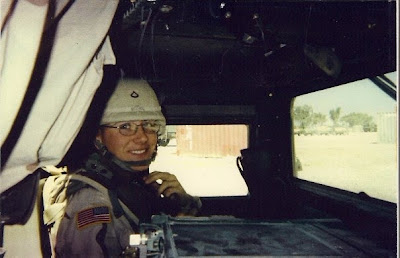Scenes from pre-deployment training, to Afghanistan, Landstuhl, and stateside medical facilities are featured in this video, which according to its description at YouTube, was made "to honor the wounded & fallen heros of 3/5, i could only capture my personal journey & are obviously many more injured that i could not include but we thank all the families & darkhorses for their sacrifice & commitment. 3/5 GET SOME!!"
From Saturday's
LA Times:
U.S. military hospitals in Landstuhl, Germany; Bethesda; and San Diego have seen a steady stream of wounded Marines and sailors from the Three-Five, including at least four triple-amputees.
In four months, 24 Marines with the Camp Pendleton-based Three-Five have been killed.
More than 140 others have been wounded, some of them catastrophically, losing limbs and the futures they had imagined for themselves.
The Marines' families have been left devastated - or dreading the knock on the door.
"We are a broken-hearted but proud family," Marine Lt. Gen. John Kelly said. He spoke not only of the Three-Five: His son 1st Lt. Robert Kelly was killed leading a patrol in Sangin.
The Three-Five had drawn a daunting task: Push into areas where the British had not gone, areas where Taliban dominance was uncontested, areas where the opium poppy crop whose profits help fuel the insurgency is grown, areas where bomb makers lash together explosives to kill and terrorize in Sangin and neighboring Kandahar province.
The result? The battalion with the motto "Get Some" has been in more than 408 firefights and found 434 buried roadside bombs. An additional 122 bombs exploded before they could be discovered, in many instances killing or injuring Afghan civilians who travel the same roads as the Marines.
...
By some accounts, no district in Afghanistan is outpacing Sangin in "kinetic activity," military jargon for combat.
"Sangin is a straight-up slug match. No winning of hearts and minds. No enlightened counterinsurgency projects to win affections," said Bing West, a Marine veteran who was an assistant secretary of Defense under President Reagan. "Instead, the goal is to kill the Taliban every day on every patrol. Force them to flee the Sangin Valley or die."
...
Marine brass, to whom heroes of the past stand as the measure of all things, say the Three-Five is writing its own chapter of combat history. Marine Commandant Gen. James F. Amos, who spent Christmas in Sangin, said the Marines there are writing "a story of heroism, of courage, of fidelity."
A victory over the Taliban in Sangin, American officials hope, would bolster the confidence of Afghan President Hamid Karzai's government and possibly push the Taliban into a negotiated settlement, allowing the United States to withdraw its troops by the 2014 target set by the Obama administration.
Maj. Gen. Richard Mills, the top Marine in Afghanistan, has called Sangin the last major Taliban stronghold in Helmand, although there are other pockets of insurgent activity in the province.
Fighters from Pakistan use Sangin as a staging area before launching into other parts of Afghanistan, particularly into neighboring Kandahar province.
"We know that the senior leadership (of the Taliban) outside the country is very concerned that this area is going to slip away," said Col. Paul Kennedy, commander of Regimental Combat Team Two, which includes the Three-Five.
There's much, much more
at the link, including the stories of individual Marines and a
photo gallery.
To the Heroes of 3/5 and their families - we love you and pray for you every day.
Get some!



















